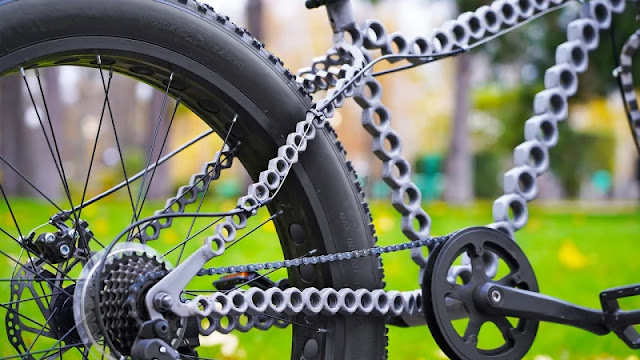Here I was, thinking that Trump/MAGA crowd had a lock on science denial or sheer irrationality. And that the Swiss education system inculcated its charges with scientific literacy and critical thinking skills.
But it seems that you don't have to belong to tRUMP end of the elephant party to come up with something as ludicrous as "Kung Flu" or the notion that climate change is a "Chinese hoax." (And here I was thinking that Donald Trump's racism extended only to Blacks and Mexicans.)
You see, a professor and researcher at the University of Fribourg, Switzerland wrote something that translates into something like this:
Today everything is climate. Many want to replace the car with public transport and bicycles. They believe that the latter burden society less and are climate-friendly. That's wrong.
 |
| Photo by Toby Jacobs |
It appeared in a column the professor wrote for the German-language Swiss newspaper Handelszeitung. The esteemed writer and thinker goes on to make the claim that official data show bikes, trains and buses to be better than the environment because of "creative accounting" and "official tricks."
He bases his claim on the following:
Although the whole debate is about energy and climate, the bicycle is treated as a perpetual motion machine. But cyclists need additional energy. For this, they have to eat more, which puts a strain on the climate.
Economical cars need 5 litres of gasoline per 100 kilometres, causing 12kg of CO2 emissions, i.e. 120 grams per vehicle kilometre – and 30 grams per passenger kilometre for a four-person occupation.
Cyclists consume around 2500 kilocalories (kcal) per 100 kilometres during normal riding. They have to compensate for energy and muscle consumption through additional food intake. So, they would need about 1 kilo of beef for the 2500 kcal. This causes them to produce 13.3kg of CO2.
Meat-eating cyclists therefore cause 133 grams of CO2 per passenger-kilometre – four times the number of well-occupied cars. If they obtain driving energy from milk, they emit 35 grams of CO2 per passenger-kilometre, which is still almost 20 percent more than the car. Unfortunately, this miserable record also applies to vegans.
First of all, he conveniently doesn't analyze the CO2 emissions of a vegan cyclist's diet. From what I understand, it's much less than that of a meat-eater.
Which brings me to my next point: He doesn't mention anything about the diets of the motorists or their passengers. If anything, I would expect them to be more likely consumers of meat--or any other food whose cultivation, processing and preparation produces high levels of emission--than cyclists. So, if one adds the emissions produced by the diets of motor vehicle drivers and passengers, and adds them to the emissions created by automobiles (and what it takes to keep those vehicles on the road), how does it compare to what cyclists, and mass transportation users generate?
Oh, and as one commenter to the article noted, if we follow the professor's logic (if we can call it that), "joggers and hikers are even worse than cyclists because they need more food" and "pedestrians are the climate killers par excellence."
So...Is the author of the, um, interesting column an engineer, environmental scientist, or any sort of expert on public health?
Of course not. Reiner Eichenberger is a professor of financial and economic policy.
He reminds me of another economist who tried to deny science: Peter Navarro, who famously claimed Anthony Fauci "was wrong about everything I have interacted with him on." Professor Navarro defended his assessment thusly: "My qualifications in terms of looking at the science is that I'm a social scientist." Hmm...The university I attended wouldn't allow liberal arts majors to fulfill their science requirement with economics, political science, sociology or the like. But the esteemed professor has a Ph.D. and therefore, he said, "I understand how to read statistical studies, whether it's in medicine, the law, economics or whatever."
Now, to be fair, I am sure that Professors Eichenberger and Navarro do indeed know how to read statistical studies. Mark Twain said there are lies, there are damned lies and there are statistics. In that vein, I will say that there are fools, there are damned fools and there folks who quote statistics and there are folks who quote the folks who quote statistics." In other words, just because someone can quote numbers, it doesn't mean they have critical thinking skills--or what's known in my old neighborhood as a bullshit detector.




